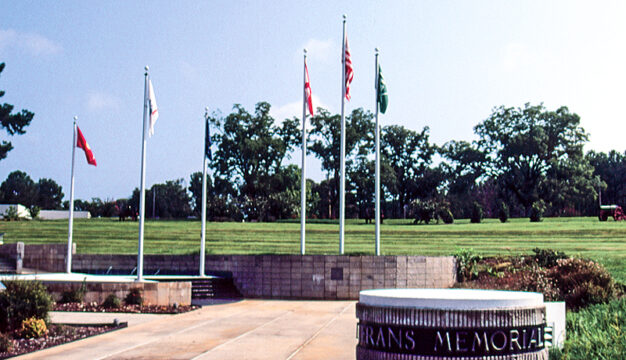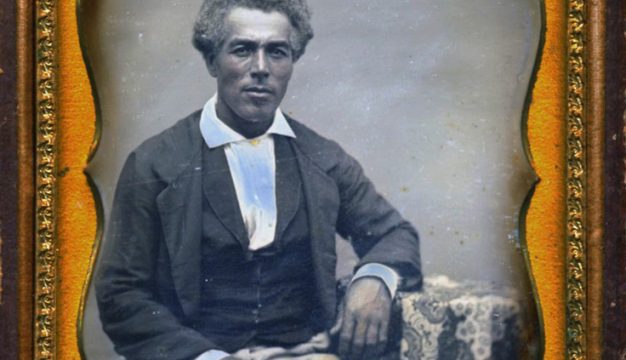Kate Duncan Smith DAR School
 Louise Willson Jacobs Building
Located in the town of Grant, Marshall County, the Kate Duncan Smith DAR School (KDS) is the only K-12 school in the United States owned and operated by chapters of the Daughters of the American Revolution (DAR). It is a privately owned public school, administered locally by the Marshall County Board of Education. It is open to any child residing within the school district. Founded in 1924 by the Alabama Society DAR, the school was named for Kate Duncan Smith, regent of the Old Elyton Chapter of the DAR for more than 20 years. The school was named after her because she took an important role in the selection process. The school was added to the National Register of Historic Places on October 11, 2002.
Louise Willson Jacobs Building
Located in the town of Grant, Marshall County, the Kate Duncan Smith DAR School (KDS) is the only K-12 school in the United States owned and operated by chapters of the Daughters of the American Revolution (DAR). It is a privately owned public school, administered locally by the Marshall County Board of Education. It is open to any child residing within the school district. Founded in 1924 by the Alabama Society DAR, the school was named for Kate Duncan Smith, regent of the Old Elyton Chapter of the DAR for more than 20 years. The school was named after her because she took an important role in the selection process. The school was added to the National Register of Historic Places on October 11, 2002.
In 1922, the National Society of the DAR announced it would build schools in the most remote sections of the East, where the Civil War was fought. Active chapters in Guntersville and Scottsboro set out immediately to promote their cities as deserving a school, contacting Congressman Joe Starnes of Guntersville for assistance. Lying on either side of Gunter Mountain, the cities had only one school on the mountain at that time: a one-teacher school called Tintop because the tin roof could be seen for miles.
 Becker Hall
E. O. Creel, Marshall County Superintendent of Education, informed the chapters that the county was in great need of financial assistance to build a school. He enlisted the aid of the local postmaster and a rural mail carrier to inform local residents about DAR plans for a school. Residents pledged to make whatever sacrifices were necessary and to perform any amount of labor needed to make the Gunter Mountain communities eligible for the school. After a possible site for the school was determined, the local DAR chapters invited the national DAR selection committee to see it. As part of the DAR's visit, families were asked to prepare a picnic lunch, dress in their best clothing, and assemble at the site. Out of 29 appeals for schools, the three finalists for the DAR school were in Marion, St. Clair, and Marshall Counties. Residents renewed their pledge to do whatever they could to earn the school, and Marshall County government promised to improve roads to the remote site.
Becker Hall
E. O. Creel, Marshall County Superintendent of Education, informed the chapters that the county was in great need of financial assistance to build a school. He enlisted the aid of the local postmaster and a rural mail carrier to inform local residents about DAR plans for a school. Residents pledged to make whatever sacrifices were necessary and to perform any amount of labor needed to make the Gunter Mountain communities eligible for the school. After a possible site for the school was determined, the local DAR chapters invited the national DAR selection committee to see it. As part of the DAR's visit, families were asked to prepare a picnic lunch, dress in their best clothing, and assemble at the site. Out of 29 appeals for schools, the three finalists for the DAR school were in Marion, St. Clair, and Marshall Counties. Residents renewed their pledge to do whatever they could to earn the school, and Marshall County government promised to improve roads to the remote site.
On Oct. 23, 1922, the national committee announced that it had selected the Gunter Mountain site, near the town of Grant, for the school, citing the isolation of the area, its great need for educational opportunities, and the enthusiasm and commitment of the local people. Residents of the community purchased slightly more than 100 acres of land from Wiley and John Ayers and donated it to the Alabama Society, DAR in 1923.
The school's first structure, a cobblestone and concrete building, was constructed with stone that families in the community gathered and lumber cut by hand and transported to the school site. This first building, now known as the Jacobs Building, contained four classrooms, an office, a library, and a reception hall. Area community groups also donated equipment and furnishings for the classrooms. The DAR raised funds to maintain the building and pay the teachers and principal.
Kate Duncan Smith DAR School opened on Feb. 26, 1924, on the 80th birthday of Kate Duncan Smith. The school offered instruction in K-12 curricula and had 100 students, two teachers, and a principal. In April 1928, the National DAR joined with the Alabama Society to make the campus a national project for chapters that chose to participate.
 Pennsylvania Log Cabin at Kate Duncan Smith DAR School
A number of current campus buildings date back to the 1930s. The Harriett K. Privett Building (1934) and the Minor Practice Cottage (1935) were both originally dedicated to instruction in domestic skills such as cooking, sewing, housekeeping, and child care. The Privett Building is now used as the elementary school media center, and the Minor Practice Cottage is used for faculty housing. The Pennsylvania Log Cabin (also 1935) was built from logs cut from forests on Gunter Mountain and was initially constructed to house the school library. Later converted into administration offices, since 2002 it has served as a museum, displaying pictures and memorabilia from past classes and antiques donated by DAR members. The Florence H. Becker Recreation Hall (1937) is notable for its unique exterior walls constructed of logs placed vertically instead of horizontally. All the buildings were funded by the DAR and were constructed through the labor of area families.
Pennsylvania Log Cabin at Kate Duncan Smith DAR School
A number of current campus buildings date back to the 1930s. The Harriett K. Privett Building (1934) and the Minor Practice Cottage (1935) were both originally dedicated to instruction in domestic skills such as cooking, sewing, housekeeping, and child care. The Privett Building is now used as the elementary school media center, and the Minor Practice Cottage is used for faculty housing. The Pennsylvania Log Cabin (also 1935) was built from logs cut from forests on Gunter Mountain and was initially constructed to house the school library. Later converted into administration offices, since 2002 it has served as a museum, displaying pictures and memorabilia from past classes and antiques donated by DAR members. The Florence H. Becker Recreation Hall (1937) is notable for its unique exterior walls constructed of logs placed vertically instead of horizontally. All the buildings were funded by the DAR and were constructed through the labor of area families.
Today, the school enrolls approximately 1,400 students; it has 75 teachers, three principals, one assistant principal, one administrator, and 60 additional support staff. DAR donations from chapters across the country fund the cost of essential school operations, including building maintenance and repairs, grounds management, historic preservation efforts, utilities, insurance, office expenses, and administrative costs not provided by the Marshall County Board of Education. The Board of Education funds teachers' salaries, textbooks, student transportation, and child nutritional programs.
 Helen Pouch Building
The school currently has 40 buildings, including a separate high school, middle school, and elementary school as well as faculty housing. Older buildings include the Helen Pouch Building, the Michigan Craft Center, the Doris Pike White Gymnasium, and the Nan Roberts Chapel, which has been made available to community residents for weddings, christenings, funerals, and other special occasions. The newest addition to the campus, the Olivia P. and Noel A. Burkey Center (2003), was a joint financial effort of the DAR and Marshall County Board of Education. The Center houses a gym, four classrooms, a family and consumer science department, an art classroom, a band room, and a choral room.
Helen Pouch Building
The school currently has 40 buildings, including a separate high school, middle school, and elementary school as well as faculty housing. Older buildings include the Helen Pouch Building, the Michigan Craft Center, the Doris Pike White Gymnasium, and the Nan Roberts Chapel, which has been made available to community residents for weddings, christenings, funerals, and other special occasions. The newest addition to the campus, the Olivia P. and Noel A. Burkey Center (2003), was a joint financial effort of the DAR and Marshall County Board of Education. The Center houses a gym, four classrooms, a family and consumer science department, an art classroom, a band room, and a choral room.
Cooperative efforts, led by the DAR, continue to fund many physical needs of the campus through the KDS Christmas Fund, Student Health Fund, and the Work Scholarship Program, and the school has initiated an endowment campaign. College scholarships worth more than $100,000 are awarded each year to graduating seniors. The school district has a 96 percent graduation rate. Over the past five years, 60 percent of KDS graduates have gone on to attend college.
During the second week of each October, DAR chapters from across the country travel to Grant for a Dedication Day, pledging funds for specific projects. The two-day event highlights speakers, student musical performances and skits, a craft show, and a basket lunch. In 2009, the school celebrated its 85th Dedication Day.



